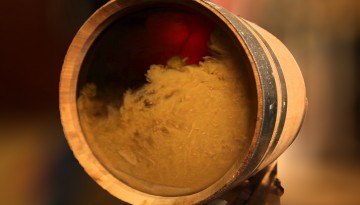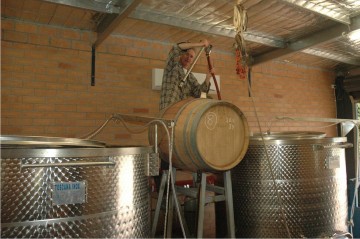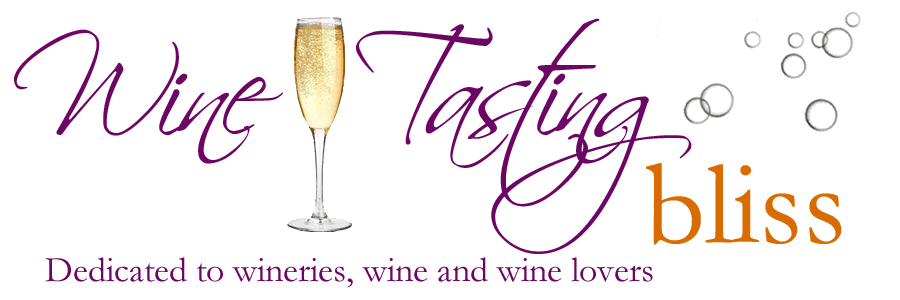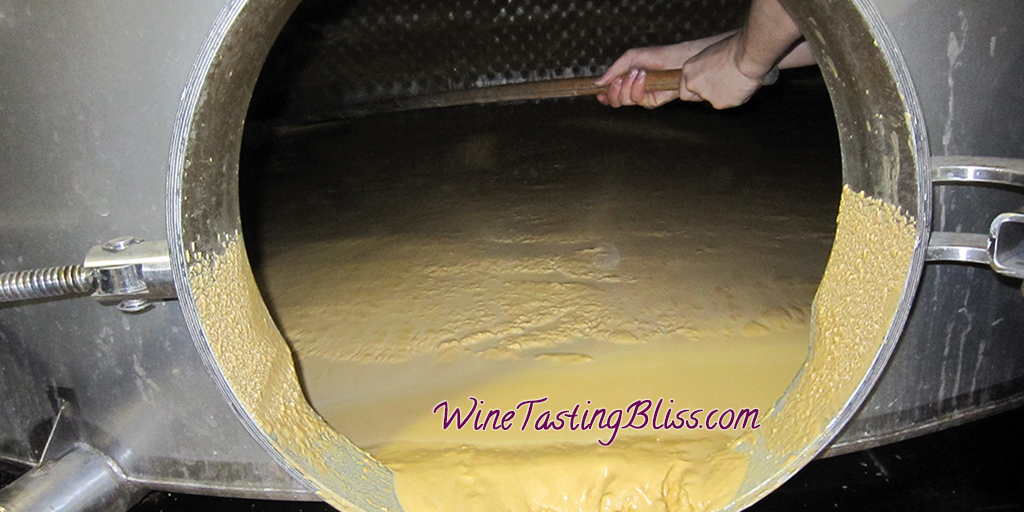The world of wine and wine making is full of fun, and not so fun, terms of art. Making wine is admittedly complicated, and deserving of a lot of descriptive terms, but sometimes it can seem overwhelming. For example, what does “sur lie” or “on the lees” mean, really?
The word “lee” gets a lot of use. One can sail lee-ward or live on the lee side of an island. There’s Bruce Lee, Robert E. Lee, Spike Lee and Stan Lee (no relation). How does any of this apply to wine? Well, it doesn’t. Once again, we can blame the French for this. They discovered that letting wine rest “sur lie” produced a better product. Really?
 In wine making terminology, lees are the bits of schmootz (to use a truly technical term) at the bottom of the wine barrel or tank. The bits are mostly yeast fragments, with the odd bit of grape skin and stem thrown in. As yeast transforms sugar into alcohol, the yeast cells explode (very quietly and peacefully) and the resulting fragments are called lees. It seems that the term “yeast cadavers” was considered and rejected, so we’re stuck with “lees.”
In wine making terminology, lees are the bits of schmootz (to use a truly technical term) at the bottom of the wine barrel or tank. The bits are mostly yeast fragments, with the odd bit of grape skin and stem thrown in. As yeast transforms sugar into alcohol, the yeast cells explode (very quietly and peacefully) and the resulting fragments are called lees. It seems that the term “yeast cadavers” was considered and rejected, so we’re stuck with “lees.”
The lees can contribute positive aspects to wine. Many wines depend on lees to add a buttery mouth feel. When you notice toasty, nutty, or smoky flavors, credit goes to the wine’s time spent on the lees. Sparkling wine and white wine, especially, owe much of their character to the lees. Thanks, little yeast critters, your sacrifice is appreciated!

The lees usually don’t make it into your wine bottle, however. Separating the lees from the wine (called “racking” for still wine or “riddling” with champagne) before bottling keeps the wine clear and avoids the sulfur aromas that too much time in contact with the lees can produce. The riddling process for champagne is even more involved, with riddling racks and ice plugs to be dealt with. But that is a story for another day.
So the next time your adjacent wine taster comments on the wonderful buttery notes in the Chardonnay you can wisely opine, “yes, just the right amount of time sur lie” and impress everyone. Throw in a reference to “bâtonnage” (French for “stirring with a big stick”) to really cement your position as wine authority!
Cheers, and thanks again to the tiny yeasts, for their invaluable contribution to our lives.
About the Author: John grills a mean steak and is always in the market for another wine fridge. Believes that if a winery has more than 10 employees, it's probably too big. Buys wine faster than he drinks it, but who cares?


